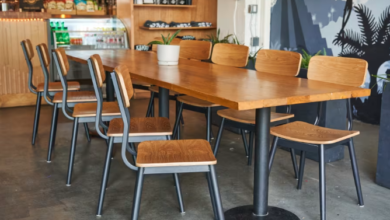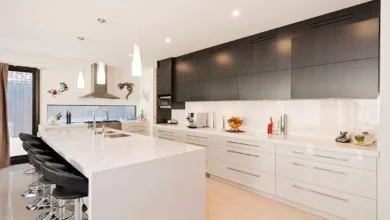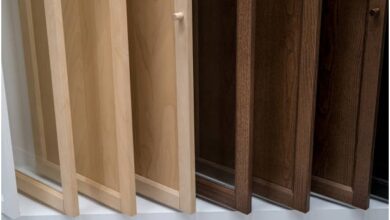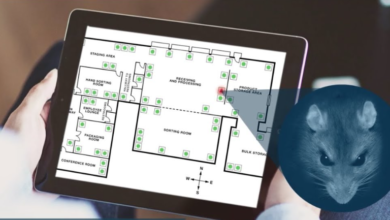How to Choose the Right Artificial Grass for Your Lawn
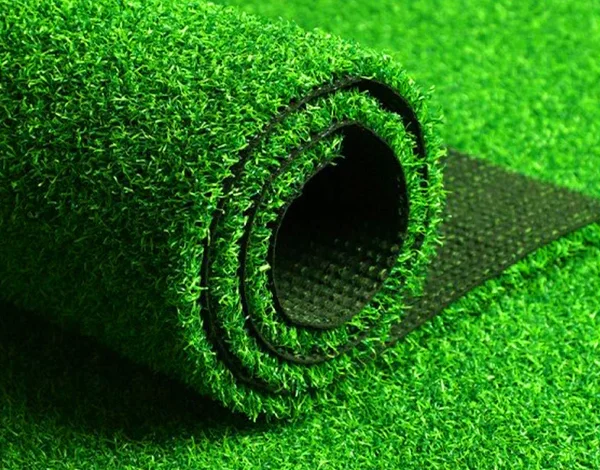
Having a beautiful and well-maintained lawn can significantly enhance the overall look of your home. However, maintaining a natural grass lawn can be time-consuming and expensive. This is where artificial grass comes in.
Artificial grass offers a low-maintenance and cost-effective alternative to natural grass, providing a lush and green lawn all year round. But with so many options available in the market, how do you choose the right artificial grass for your lawn? In this article, we will provide you with some valuable tips to help you make an informed decision.
1. Determine the Purpose of Your Lawn
The first step in choosing the right artificial grass is to determine the purpose of your lawn. Are you looking for a lawn that will primarily be used for aesthetics or do you have children and pets who will be using it for play? Knowing the purpose of your lawn will help you select the appropriate type of artificial grass that will suit your needs.
If you are looking for a lawn that will primarily be used for aesthetics, you may want to consider synthetic grass with a lush and realistic appearance. These types of artificial grass are designed to mimic the look and feel of natural grass, and they are often made with soft and durable materials.
On the other hand, if you have children and pets who will be using the lawn for play, you will need to choose a more durable and resilient type of artificial grass. These types of synthetic grass are typically designed to withstand heavy foot traffic, rough play, and pet activities. They are often made with stronger materials that can withstand wear and tear. Additionally, you may also need to consider the maintenance requirements of the artificial grass.
Some types may require regular brushing and cleaning to keep them looking their best, while others may be more low-maintenance. By determining the purpose of your lawn and considering factors such as aesthetics, durability, and maintenance, you can choose the right artificial grass that will meet your specific needs and preferences.
2. Consider the Quality and Realism
When it comes to artificial grass, not all products are created equal. It is important to consider the quality and realism of the grass before making a purchase. Look for artificial grass that is made from high-quality materials and has a realistic appearance.
Additionally, consider the durability and maintenance requirements of the artificial grass. High-quality artificial grass should be able to withstand heavy foot traffic and resist fading from sunlight exposure. It should also be easy to clean and maintain, requiring minimal effort to keep it looking its best.
Another important factor to consider is the drainage capabilities of the artificial grass. Look for a product that has good drainage, as this will prevent water from pooling on the surface and causing damage. Proper drainage is especially important for outdoor areas where rainwater may accumulate.
The installation process should also be taken into account. Look for artificial grass that is easy to install, whether you plan to do it yourself or hire a professional. Some products come with a backing that makes installation simple and straightforward. Finally, consider the warranty and customer support offered by the manufacturer.
A reputable company should stand behind their product with a solid warranty and provide reliable customer support in case any issues arise. By taking these factors into consideration, you can ensure that you are purchasing high-quality artificial grass that will provide a realistic and long-lasting solution for your landscaping needs.
3. Consider the Maintenance Requirements
One of the main advantages of artificial grass is its low maintenance nature. However, different types of grass may still have varying maintenance requirements. Before making a purchase, consider the maintenance requirements of the grass and whether it fits your lifestyle. Artificial grass is known for its low maintenance nature, making it a popular choice for homeowners and businesses alike.
However, it is important to note that not all types of artificial grass have the same maintenance requirements. Before making a purchase, it is essential to consider the specific maintenance needs of the grass you are considering, and determine whether it aligns with your lifestyle and preferences. Some types of artificial grass may require regular brushing or raking to keep the blades upright and maintain their natural appearance.
This can be done with a stiff bristle broom or a power brush. Additionally, removing any debris, such as leaves or twigs, is necessary to prevent them from accumulating and potentially damaging the grass. In some cases, artificial grass may also require infill material to be added or replaced periodically. This infill material helps to support the blades and maintain the integrity of the grass.
The frequency of infill maintenance will depend on factors such as usage and climate. Another aspect to consider is drainage. Proper drainage is crucial to prevent water from pooling on the surface of the grass. Some types of artificial grass are designed with built-in drainage systems, while others may require the installation of a separate drainage system. Ensuring that the grass you choose has adequate drainage capabilities is important for its longevity and performance.
4. Assess the Drainage System
A proper drainage system is crucial for any lawn, including artificial grass. Without a good drainage system, your lawn may become flooded or waterlogged, leading to issues such as mold and mildew growth. Therefore, it is important to assess the drainage system of the artificial grass before making a purchase.
A proper drainage system is essential for maintaining the overall health and longevity of your lawn, whether it is natural or artificial grass. Without adequate drainage, water can pool on the surface, causing a range of problems. When it comes to artificial grass, a good drainage system is even more crucial.
Unlike natural grass, which has the ability to absorb and drain water naturally, artificial grass requires additional measures to prevent water buildup. Without proper drainage, your artificial lawn may suffer from a variety of issues. One of the main concerns with inadequate drainage is the potential for flooding or waterlogging.
When water is unable to properly drain through the grass, it can accumulate on the surface, creating pools or even flooding. This not only makes the lawn unusable but can also cause damage to the underlying surface. Another issue that can arise from poor drainage is the growth of mold and mildew. When water is trapped within the grass fibers and the underlying layers, it creates a damp environment that is perfect for mold and mildew to thrive.
This can not only be unsightly but also pose health risks to those using the lawn. To avoid these problems, it is essential to assess the drainage system of the artificial grass before making a purchase. Look for features such as perforated backing or a specialized drainage layer that allows water to flow freely through the grass.
5. Consider the Warranty and Lifespan
Artificial grass is an investment, and you want to ensure that you are getting a product that will last. When choosing the right artificial grass for your lawn, consider the warranty and lifespan of the product. You should look for a warranty that offers a reasonable length of coverage, typically ranging from 8 to 15 years.
This ensures that the manufacturer stands behind their product and provides protection against any defects or issues. In addition to the warranty, it is important to consider the lifespan of the artificial grass. High-quality artificial grass can last anywhere from 15 to 25 years, depending on the amount of foot traffic and maintenance it receives.
Look for grass that is made with durable materials and has a strong backing to ensure longevity. It is also worth considering the UV stability of the artificial grass. Over time, exposure to sunlight can cause the grass to fade or deteriorate.
Look for grass that has been treated with UV inhibitors to protect against sun damage and maintain its vibrant appearance. Considering these factors will help you choose an artificial grass product that will provide long-lasting beauty and durability for your lawn. By investing in a high-quality product, you can enjoy the benefits of a low-maintenance and aesthetically pleasing lawn for many years to come.
Conclusion
Choosing the right artificial grass for your lawn involves considering factors such as the purpose of your lawn, the quality and realism of the grass, the maintenance requirements, the drainage system, and the warranty and lifespan of the product. By taking these factors into account, you can ensure that you select the artificial grass that best suits your needs and provides you with a beautiful and hassle-free lawn for years to come.
